- Best Winter Treks in Nepal 2025/2026 season
- Everest View Trek
- Ghorepani Poon Hill Trek
- Everest Base Camp Trek
- Nagarkot Chisapani Trek
- Gokyo Lake Trek
- Pikey Peak Trek
- Annapurna Base Camp Trek
- Mardi Himal Trek
- Khopra Ridge Trek
- Dhampus Sarangkot Trek
- Jomsom Muktinath Trek
- Langtang Valley Trek
- Tamang Heritage Trek
- Helambu Valley Trek
- Langtang Gosaikunda Lake Trek
- Essential Guides for Winter Treks in Nepal
- Pros and Cons of Winter Trekking in Nepal
Nepal's winter mountains deliver some of the most incredible scenery you'll see anywhere in the world. Snow transforms the peaks into shining white giants, while crystal-clear days provide visibility that stretches for miles.
Most people choose spring or autumn for trekking to Nepal, which means winter trails stay refreshingly quiet. You'll hike through landscapes that photographers dream about, such as lakes turned to ice, snow-heavy rhododendron trees, and villages so peaceful.
With over 70 glaciers scattered throughout the Langtang region, winter transforms it into a genuine wonderland for anyone willing to handle the cold. The payoff comes in those crystal-clear views that only winter delivers, when the Himalayas appear with brilliant blue skies.
From December through February, winter treks come with unexpected benefits. Accommodation is easier to secure, local communities are more accessible, and wildlife sightings increase on the quieter paths.
Nepal's top winter treks go from famous routes like Everest Base Camp to quiet gems such as Pikey Peak and Mardi Himal. These Best 15 winter treks in Nepal routes show how cold weather can give you some of Nepal's best mountain adventures.
Popular winter treks in Nepal include both shorter, lower-altitude hikes and classic high-altitude routes that offer clear skies and fewer crowds despite the cold. While the higher passes may be blocked by snow from late December to February, many trails remain accessible with the right gear and preparation.
Best Winter Treks in Nepal 2025/2026 season
Several trekking routes in Nepal remain accessible and uniquely beautiful during winter, offering clear skies, less-crowded trails, and stunning snowy landscapes. While some higher-altitude passes may be closed due to snow, many lower-and mid-elevation treks are ideal during the colder months of December, January, and February.
The winter is from December to February, and Nepal's impressive peaks are blanketed in snow. The all-white landscapes create a picture-perfect winter land that few people explore. The cold temperature makes the journey through trekking routes of Nepal most exciting and challenging but, at the same time, worthwhile. The snow, the crisp air, and the tranquility of the less busy atmosphere all added to the overall experience. Therefore, winter is one of the stunning times to explore Nepal's trekking trail.
Where to Trek in Nepal during winter?
Everest View Trek
Best winter Treks in Nepal
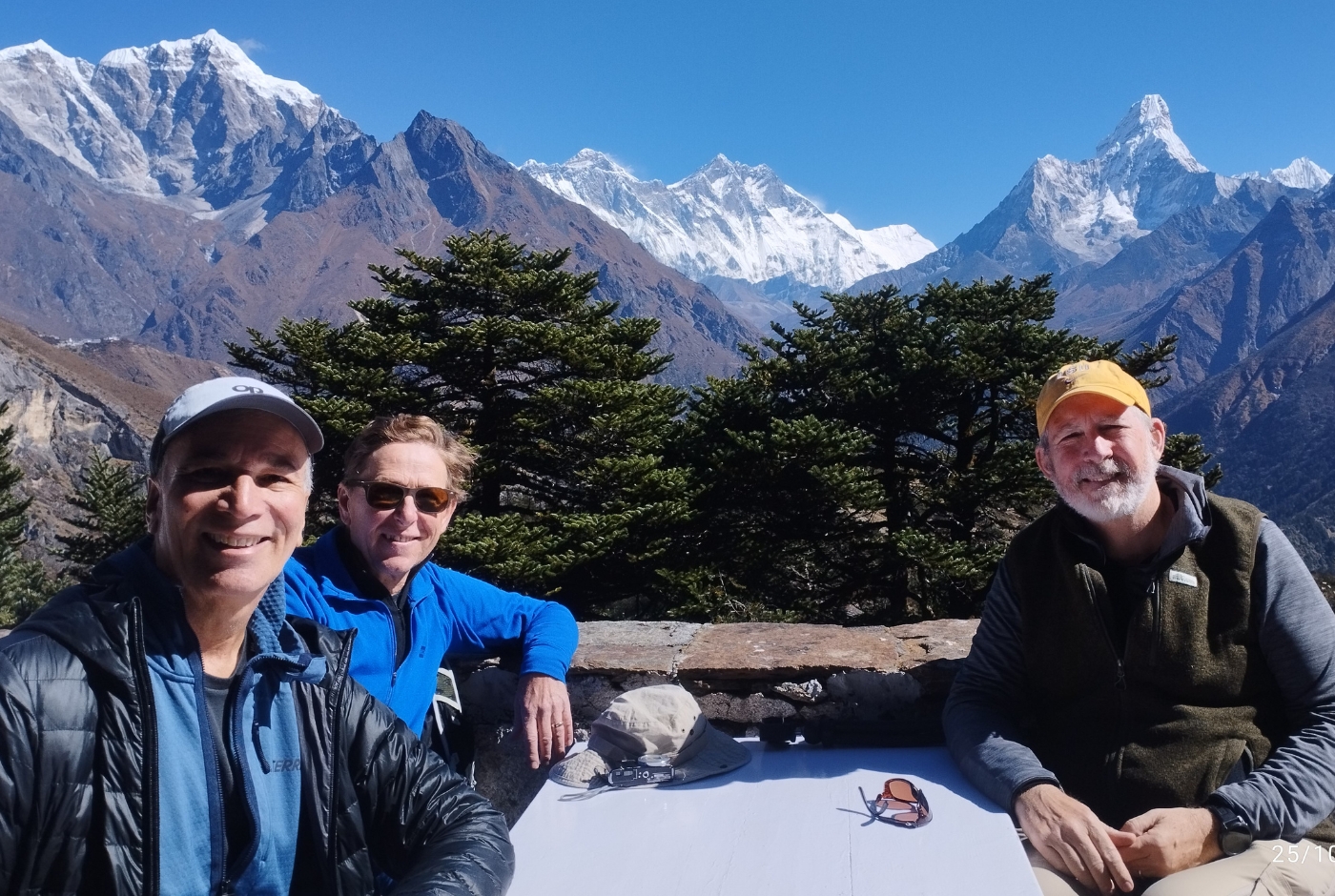
The Everest View Trek lets you see Mount Everest up close without spending weeks climbing. This great walk takes 8–10 days and goes up to 3,867 meters (12,687 ft) at the famous Everest View Hotel.
Every morning when you step out of your lodge, there's Everest, Ama Dablam, Lhotse, and dozens of other white peaks stretching as far as you can see.
This trek works great for people who've never done big mountain walks before or families who want to trek together. Winter makes this place extra special because the sky stays clear for days, and you won't bump into crowds of other trekkers everywhere you go.
It's definitely one of the best winter hikes in Nepal because you get incredible mountain views and meet real Sherpa families.
Which Trek is best in winter?
Ghorepani Poon Hill Trek
Best Treks in December in Nepal
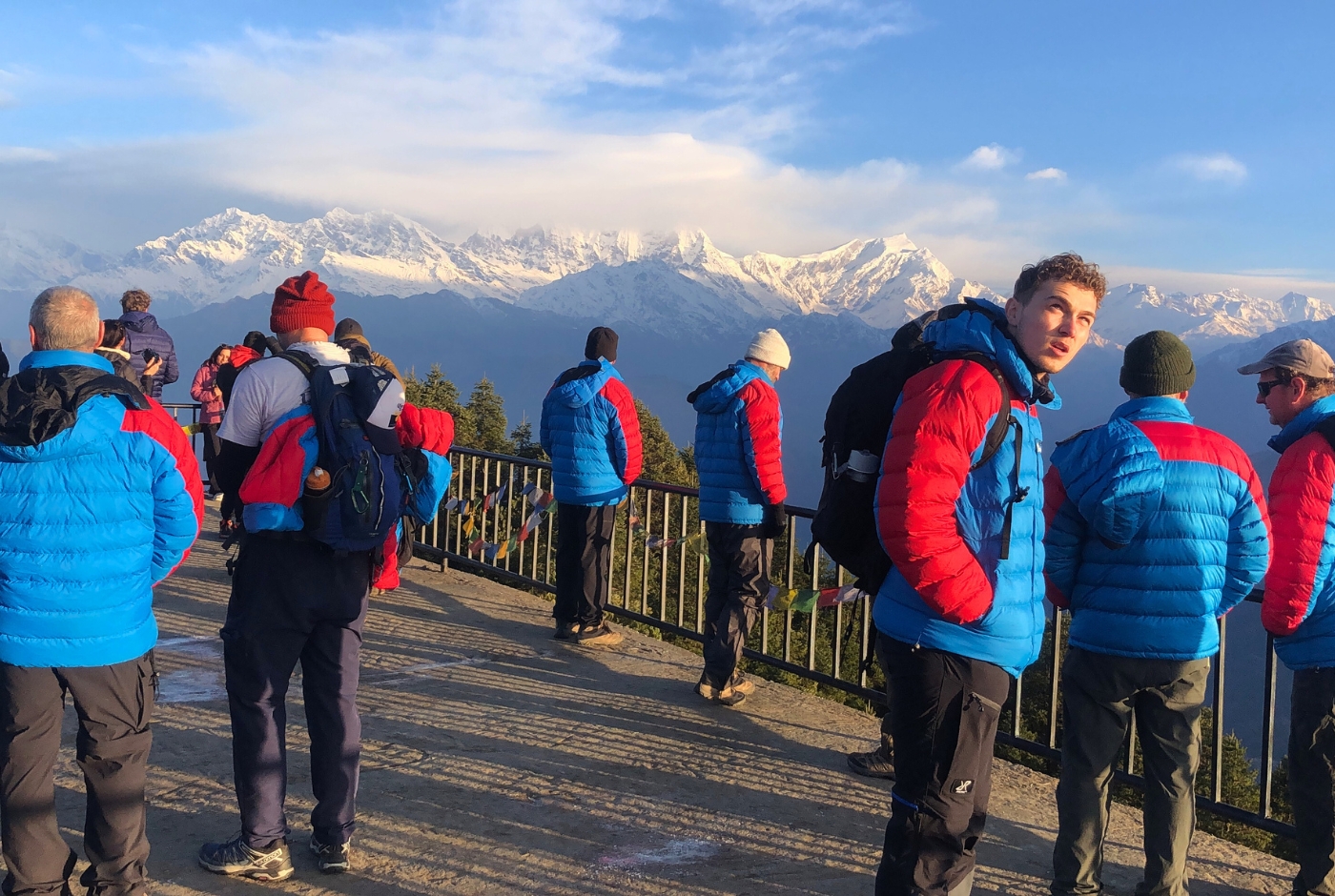
The Ghorepani Poon Hill Trek ranks as one of Nepal's most loved short adventures. This 5 to 6-day journey takes you through colorful rhododendron forests that look like nature's own art gallery.
The Gurung and Magar villages here still live the way their families did long ago. The best part happens at Poon Hill at 3,210 meters (10,531 feet), where you can watch sunrise turn the whole Annapurna and Dhaulagiri mountain ranges bright gold.
Villages like Ghorepani and Ulleri greet trekkers with real kindness, and you'll end up drinking tea and swapping stories with the local people.
Winter makes this trek especially appealing because the moderate altitude keeps it comfortable for trekking. The rhododendron forests get dusted with snow that transforms ordinary trails into peaceful winter scenes.
This trek provides the perfect winter package that’s suitable for both first-time trekkers and experienced hikers.
Everest Base Camp Trek
Is it possible to trek to EBC during the winter time in Nepal?
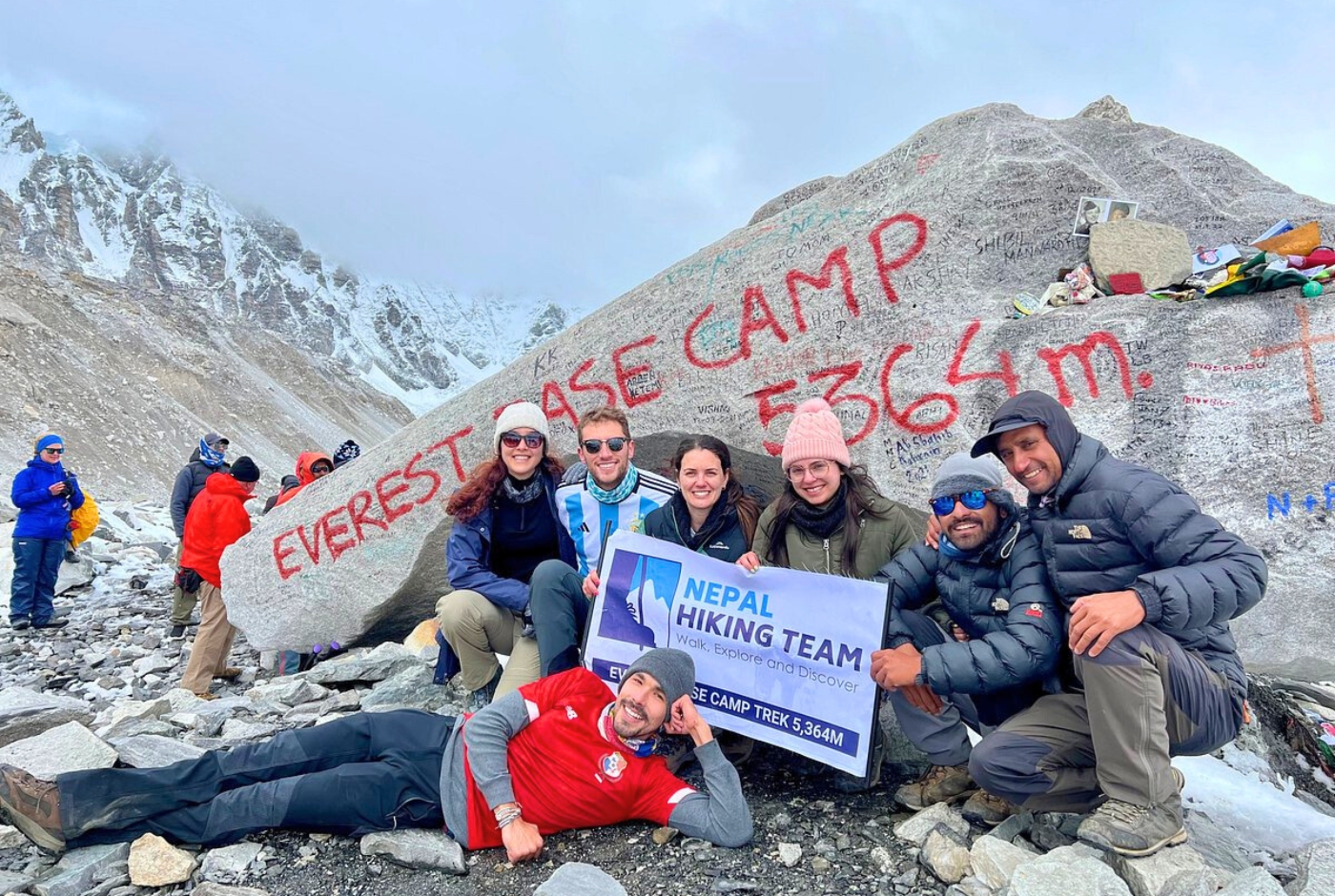
The Everest Base Camp Trek stands as Nepal's most famous mountain adventure. It takes you to the world's highest peak at Kala Patthar (5,545 meters) over 12 to 14 days. Winter transforms this Everest region trek into something truly special, with fewer people on the trails where you can hear your footsteps crunching through snow.
Crystal-clear skies reveal mountain views that summer's air often hides from trekkers. The cold bites can be hard, but stepping out each morning to see Everest, Lhotse, and stunning Ama Dablam makes everything worthwhile.
During winter, Sherpa families have more time to share stories about their mountain home during quieter months. You need serious gear and plenty of layers, but the payoff includes legendary blue skies. EBC Trek is easily one of the best winter treks in Nepal that changes how you see mountains.
Nagarkot Chisapani Trek
Top treks in Nepal 2025 in January
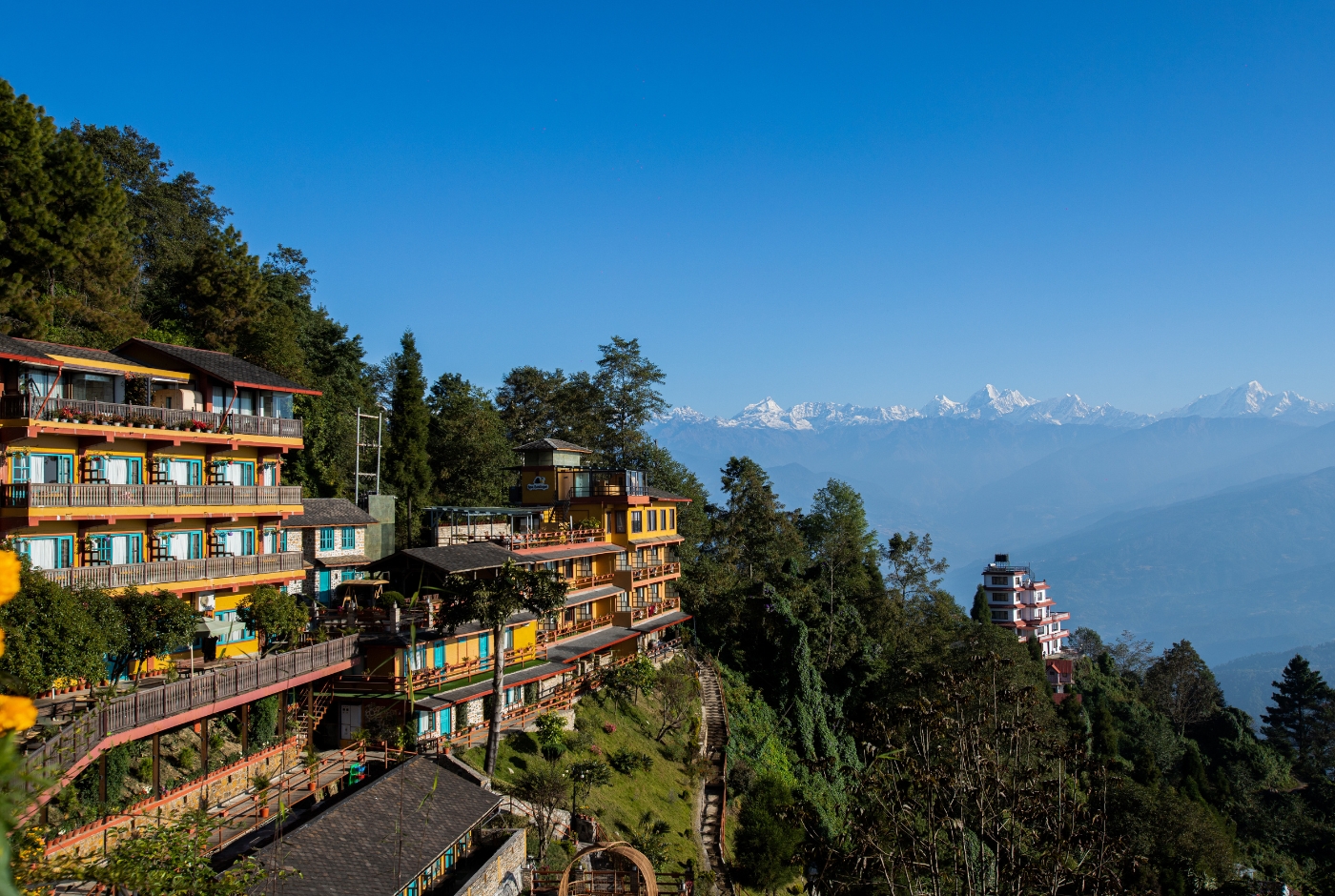
The Nagarkot Chisapani Trek proves that you don't need weeks in the mountains to experience Nepal's magic, making it one of the best winter treks in Nepal. This accessible route starts at Kathmandu's doorstep, passing through green terraced hillsides.
Nagarkot's sunrise remains memorable among trekkers, allowing you to watch first light transform Everest and Langtang into gleaming mountains. As you continue toward Chisapani, the path leads through quieter woodland sections.
Winter transforms this trek into something special as it has moderate elevation that keeps conditions comfortable. The colder months deliver exceptionally clear skies that make mountain photography almost effortless.
Lodge evenings become especially cozy during winter, with crackling fires providing the perfect setting for hot meals. The reduced crowds mean you can visit viewpoints without feeling rushed.
Gokyo Lake Trek
Lovely winter destinations to trek and hike in Nepal
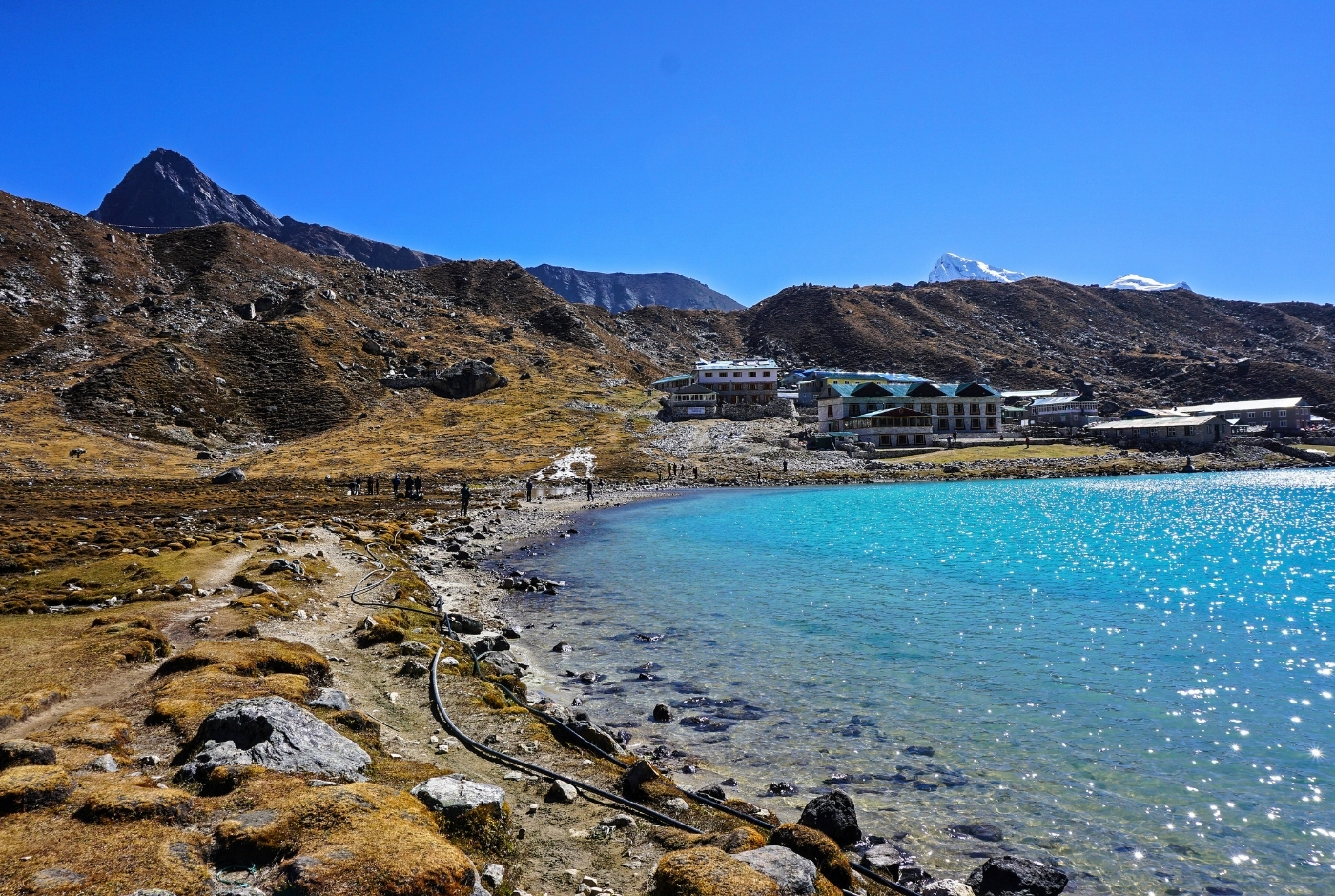
The Gokyo Lake Trek takes you on an amazing 10 to 12-day journey to some of the most beautiful glacial lakes in the Everest region. At Gokyo Ri (5,357 meters/17,575 ft), you’ll get incredible views of Everest, Lhotse, Makalu, and Cho Oyu all lined up like giants.
The route takes you past those Gokyo Lakes that look almost too blue to be real, alongside the massive Ngozumpa Glacier that stretches further than any other glacier in Nepal. You'll spend time in the quiet village of Gokyo, where Sherpa families welcome trekkers with warm smiles.
Winter makes this trek particularly special because the altitude stays manageable and the trails offer good shelter from harsh weather. The whole region turns into a peaceful, snow-covered wonderland.
The winter quiet means fewer trekkers for the best photo spots, and the mountain lodges feel extra cozy when you come in from the cold. This trek gives you all the magic of the Everest region.
Pikey Peak Trek
The Pikey Peak Trek gives you a fantastic 9-day adventure through Nepal's quieter side of the Khumbu region, reaching Pikey Peak at 4,065 meters. From this point, you’ll get those jaw-dropping views of Mount Everest, Annapurna, and Kanchenjunga.
You'll also get to visit ancient monasteries such as Thupten Chholing and Chiwong Gompa, where monks still follow centuries-old traditions.
Winter turns Pikey Peak into something really special because the gentle ridgelines and altitude make it possible to trek on snow-covered trails. Those crisp winter mornings create perfect, clear skies that make the sunrise from the summit absolutely incredible.
Even during winter, you’ll get to enjoy stunning mountain scenery, real cultural experiences, and peaceful moments. The trail sees far fewer trekkers during winter, giving you peaceful solitude and a chance to truly connect with the quiet beauty of the mountains and Sherpa culture.
Annapurna Base Camp Trek
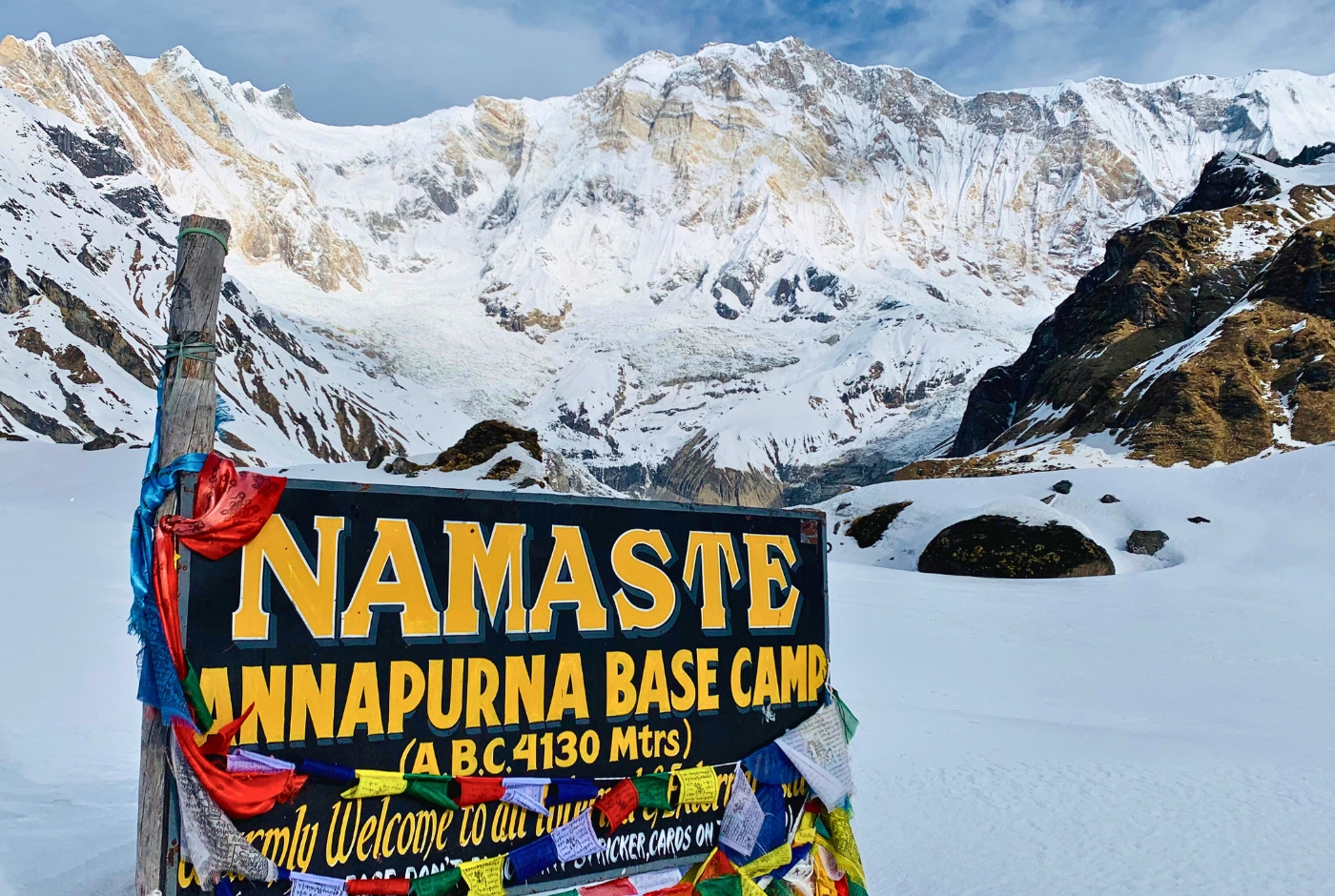
Annapurna Base Camp Trek takes you on an incredible 12 to 14-day journey right into the heart of the Annapurna mountains. You’ll reach Annapurna Base Camp at 4,130 meters (13,550 feet) .
During the trek, you’ll get to see massive Annapurna I, the distinctive Machapuchare that looks like a fish tail, and towering Hiunchuli. The trail leads through friendly villages where locals still farm terraced fields and high alpine meadows that have yak.
You’ll climb to Poon Hill for sunrise views and reach ABC, the base camp's glacier, where mountains surround you completely.
Winter makes this trek particularly appealing because the altitude stays manageable compared to other big Himalayan routes. The higher sections get chilly, but winter brings those stable weather patterns and crystal-clear skies.
Snow transforms the landscape from lush green forests into a peaceful white wonderland that feels almost magical when you're walking through it.
Mardi Himal Trek
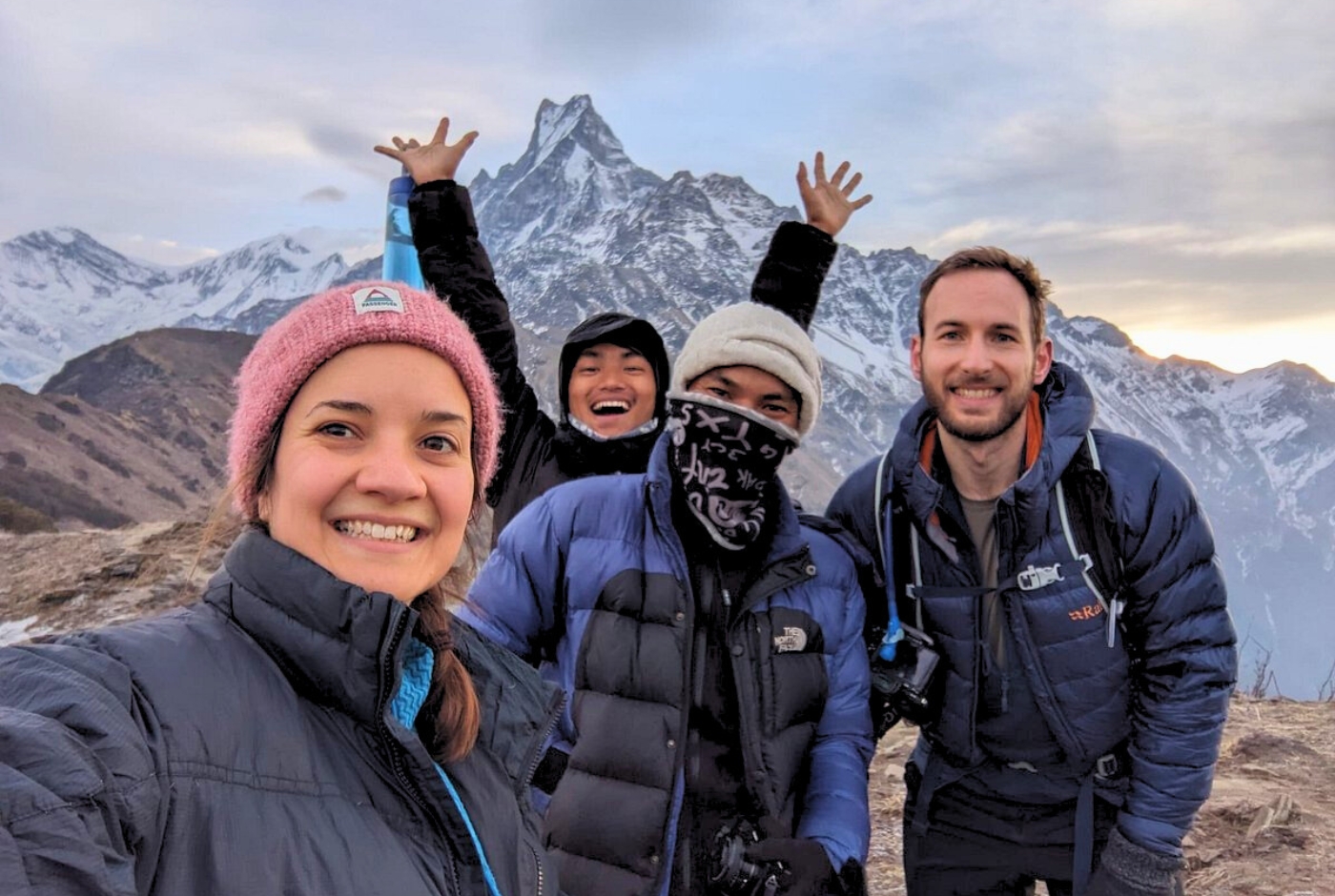
The Mardi Himal Trek gives you one of Nepal's best-kept secrets in the Annapurna region, taking just 6 to 8 days. The trek reaches its highest elevation at Upper View Point (4,200 meters).
This route lets you get incredibly close views of Machapuchare, Annapurna South, and Hiunchuli without fighting crowds for photo spots. It passes through authentic Gurung and Magar villages where families still live traditional mountain lifestyles.
Winter transforms this trek into something really special because the moderate altitude keeps it suitable for trekking during the winter season.
Khopra Ridge Trek
Best trek in December in Nepal
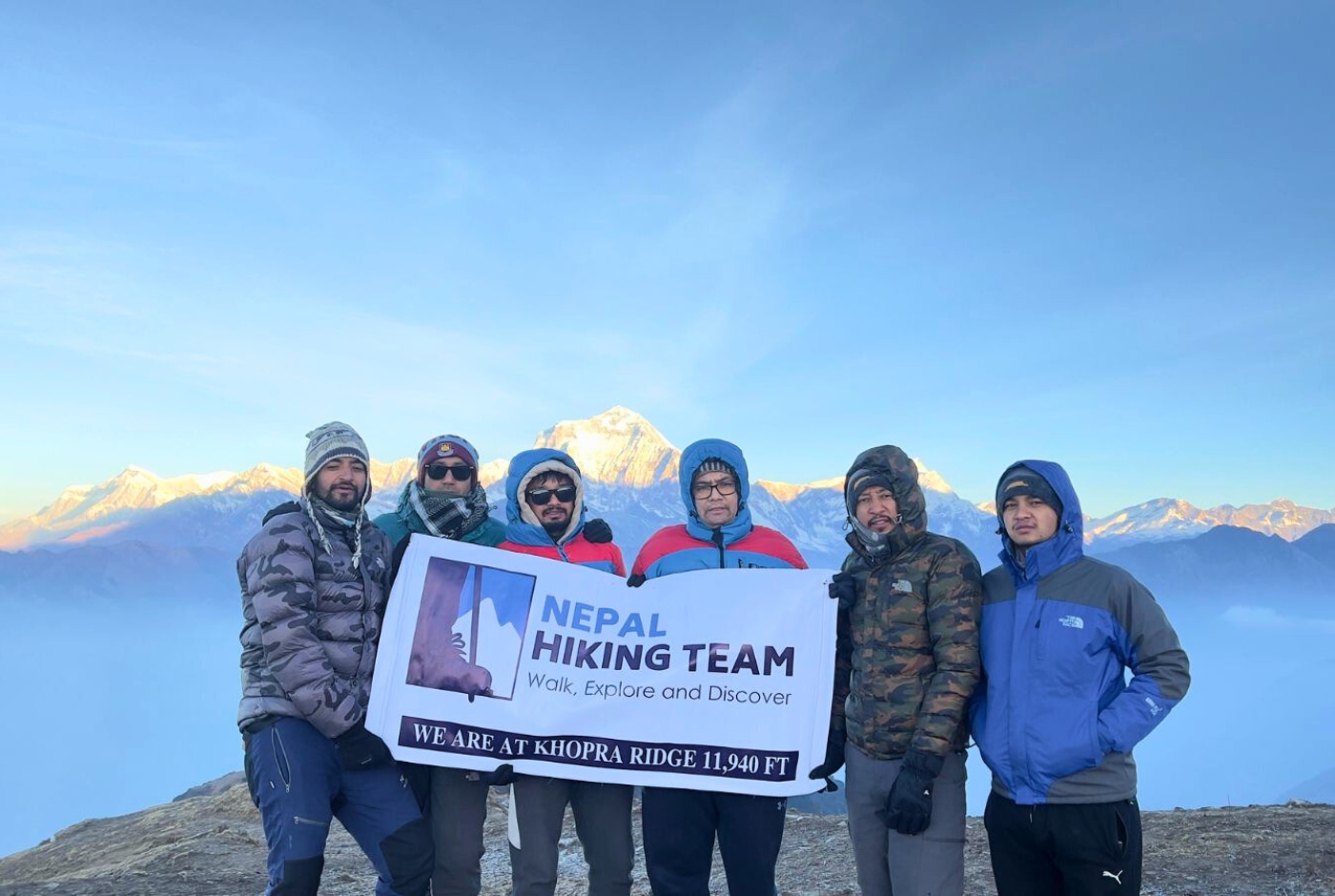
The Khopra Ridge Trek offers you a fantastic 7 to 8-day adventure in the Annapurna region that stays off the beaten path. The main attraction comes at Khopra Ridge itself at 3,660 meters (12,008 feet), where you get some panoramic views of both the Annapurna and Dhaulagiri mountain ranges.
Your journey takes you through villages like Tadapani and Ghorepani, where local families still welcome trekkers with genuine mountain hospitality.
Khopra Ridge becomes particularly magical during winter when snow covers the trail, making the postcard-perfect scenes that photographers dream about capturing.
The traditional teahouses along the Khopra route feel especially cozy during cold evenings, where you'll share meals and stories with local families.
Dhampus Sarangkot Trek
Can you hike in Nepal in January?
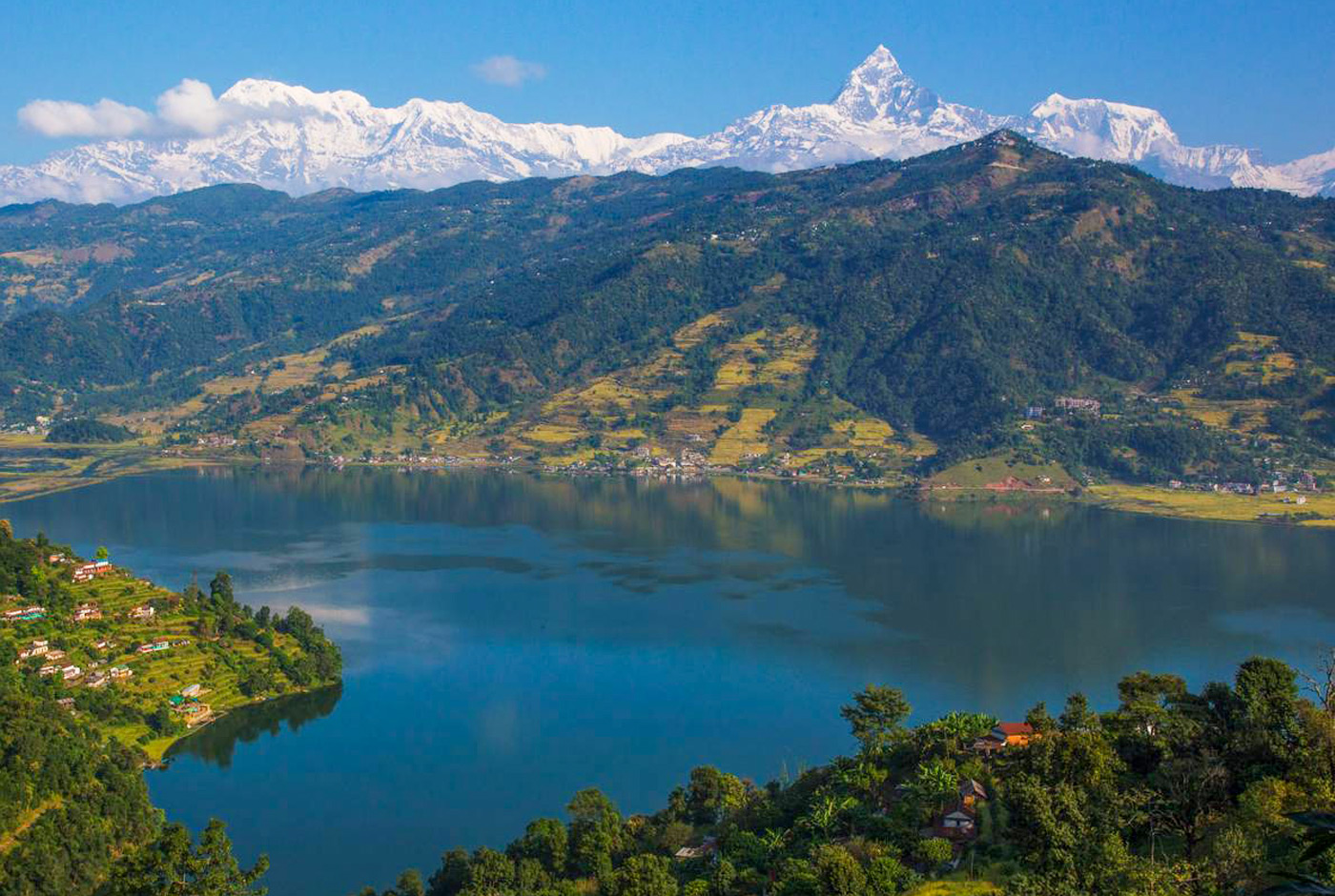
The Dhampus Sarangkot Trek gives you a perfect 3 to 4-day taste of the Himalayas, starting right from the beautiful lakeside city of Pokhara. This short adventure takes you through gorgeous terraced fields where farmers still work the land by hand, through traditional Brahmin and Chhetri villages.
The main highlight of the trek is Australian Camp around 1,990 meters, where you get incredible close-up views of Machhapuchhre, Annapurna, and Dhaulagiri ranges. Your journey ends at the famous Sarangkot.
Winter makes the Dhampus Sarangkot Trek especially appealing because those famous clear winter skies guarantee you'll see stunning mountain panoramas every single morning. The gentle winter climate keeps walking comfortable during the day.
Jomsom Muktinath Trek
Winter packages and cold-weather trekking places in Nepal
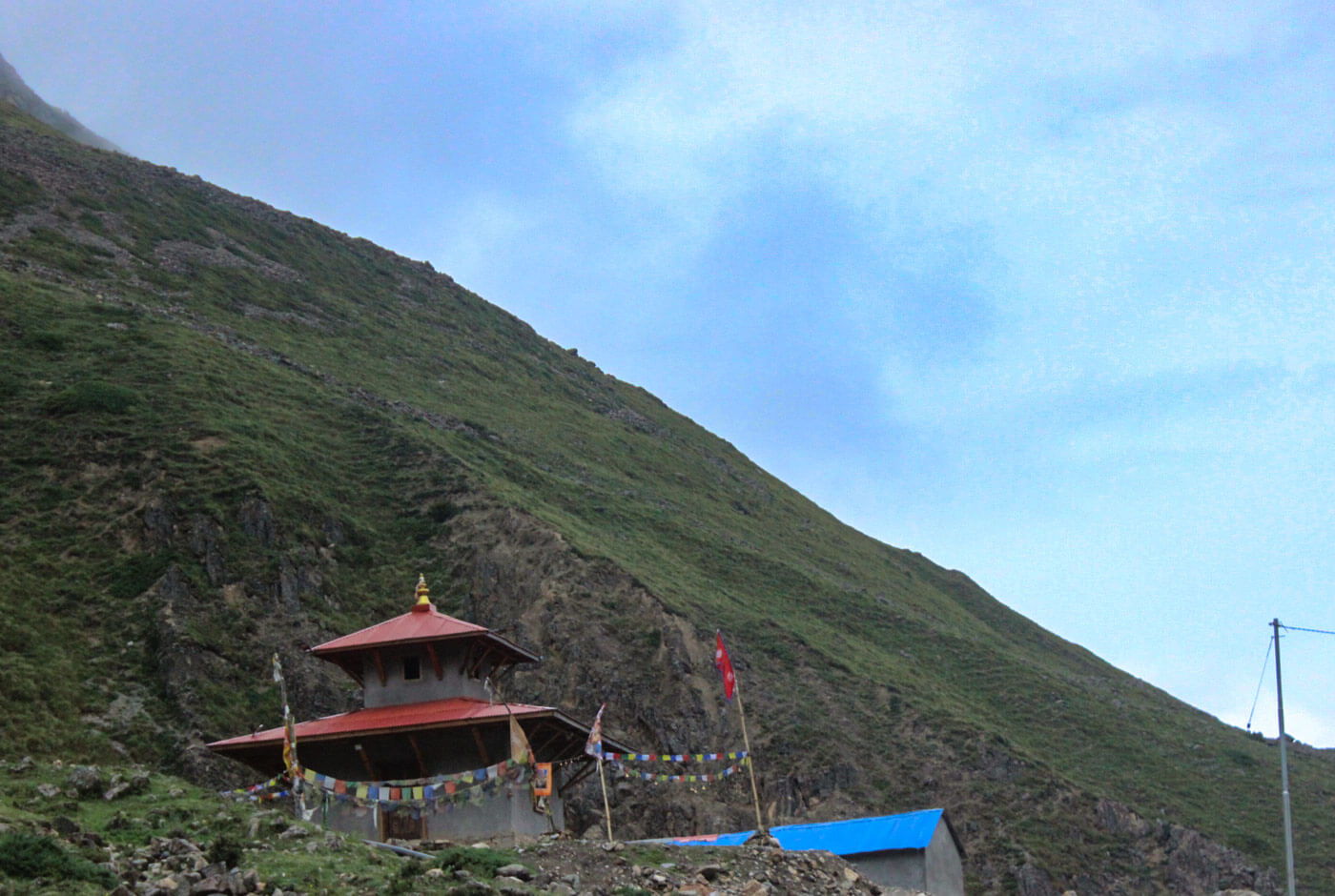
The Jomsom Muktinath Trek takes you on a great 14-day walk through the green Annapurna hills to the dry lands of the Mustang area. This route takes you to the sacred Muktinath Temple at 3,800 meters, which draws pilgrims from both Hindu and Buddhist traditions.
You'll witness that famous sunrise from Poon Hill, walk through the world's deepest Kali Gandaki Gorge, and explore traditional Tibetan Buddhist monasteries. The charming villages of Kagbeni and Jomsom offer authentic mountain hospitality
You can enjoy panoramic views of Annapurna, Dhaulagiri, and Nilgiri peaks. Winter transforms the Jomsom Muktinath Trek into something special because the moderate altitude keeps it comfortable.
The famous winter winds of Mustang actually help by keeping skies crystal clear, giving you those spectacular snow-capped peaks
Langtang Valley Trek
Nepal's best trekking route in winter 2025/26
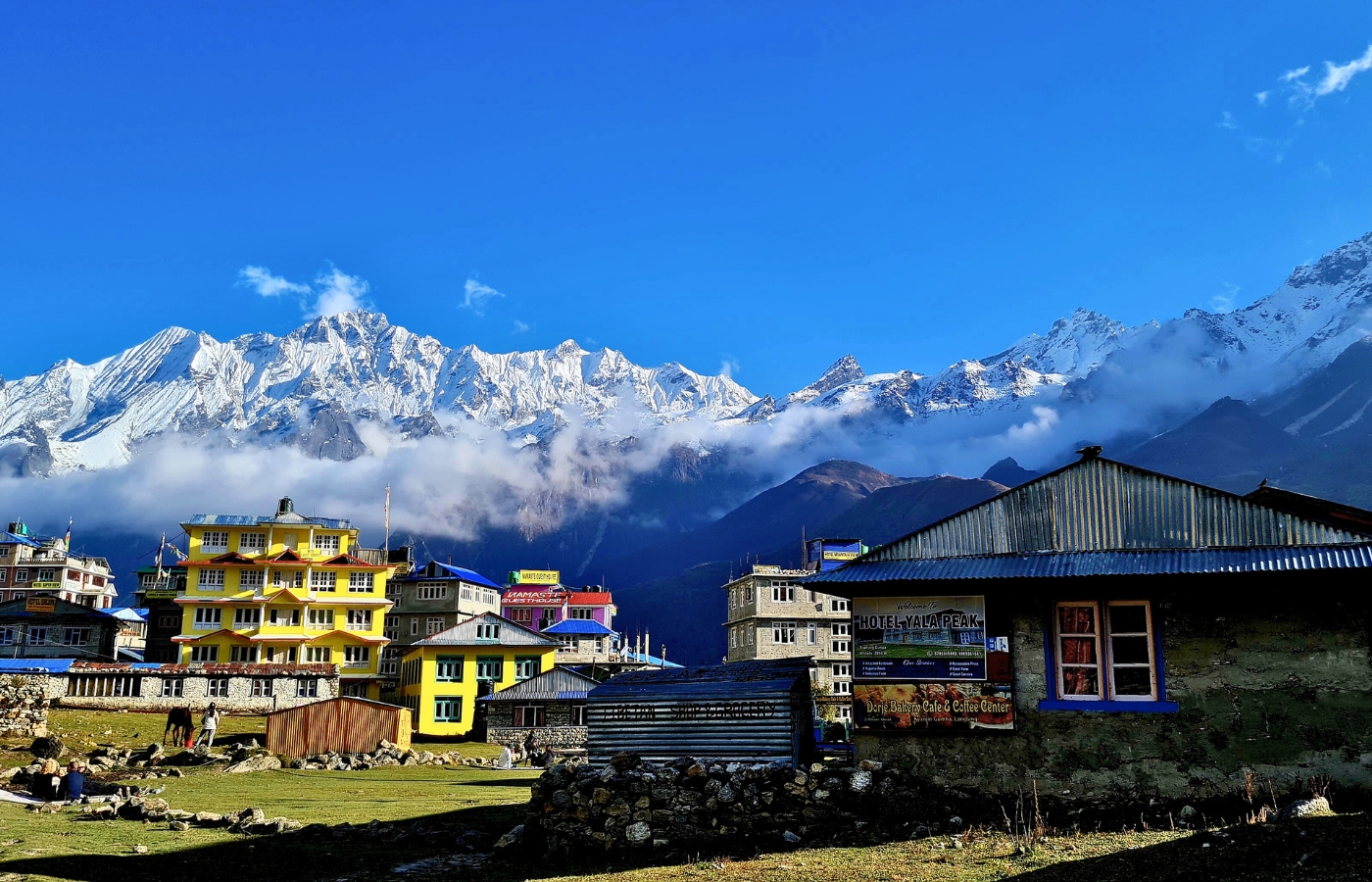
The Langtang Valley Trek gives you an incredible 7 to 10-day adventure that perfectly combines stunning Himalayan scenery with authentic Tamang culture. Known as the "Valley of Glaciers," this route treats you to breathtaking views of towering Langtang Lirung, Gangchenpo, and Dorje Lakpa.
The best view comes at Kyanjin Ri around 4,773 meters, where those famous 360-degree views of snow-capped peaks and glaciers make every step worthwhile. You can also taste that incredible local yak cheese and visit Buddhist monasteries.
Winter transforms Langtang Valley into something truly magical because the crystal-clear skies reveal mountain views that often hide behind clouds. Those cold morning starts quickly become forgotten memories when golden sunlight hits the snowy summits.
Langtang Valley is the ideal choice for trekkers wanting crowd-free winter beauty combined with rich cultural experiences.
Tamang Heritage Trek
Best Nepal Trekking in cold season
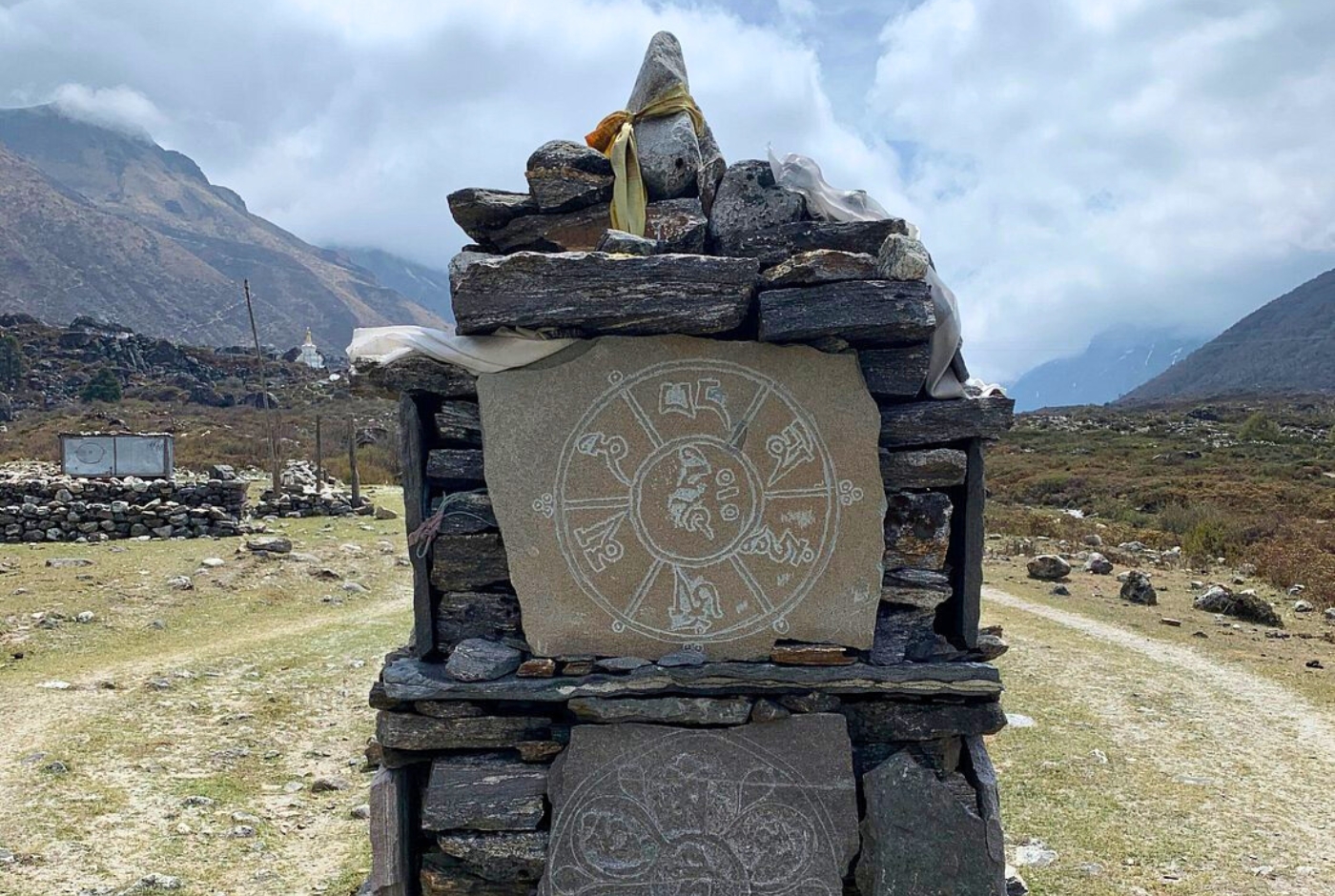
The Tamang Heritage Trek offers an incredible 6-8 day adventure through the beautiful foothills of Nepal's Langtang region. You’ll walk through authentic Tamang villages where the local people greet you with genuine warmth.
Your journey peaks at Nagthali Viewpoint, sitting at 3,165 meters, where you can view Langtang Lirung, Ganesh Himal, and peaks that stretch into Tibet. Natural hot springs provide wonderful spots to unwind and soak your muscles after each day.
Winter brings a special charm to this trek when the paths grow quieter and you encounter fewer other hikers. The crisp, cold air allows you to have excellent mountain photography, giving you clear shots of peaks covered in snow.
You'll often see light snow gently falling, which creates a fairy-tale atmosphere across the entire landscape. The trek stays at moderate elevations, so winter weather doesn't become too much for regular hikers to handle.
Helambu Valley Trek
The Helambu Trek provides a 5-7 day mountain experience near Kathmandu. You'll walk through authentic Hyolmo villages, beautifully terraced farmland, and thick green forests while enjoying views of peaks such as Langtang Lirung and Dorje Lakpa.
The highest elevation takes you over Tharepati Pass at 3,650 meters, where you can see across both the Langtang and Jugal mountain ranges. The local family are really friendly to trekkers, and the teahouses make you feel at home with good mountain care on your walk.
Winter transforms the Helambu Trek into a peaceful mountain escape where villages receive light dustings of snow and prayer flags flutter quietly in the chilly air.
During cold winter days, mountains like Langtang Lirung and Dorje Lakpa appear incredibly sharp against bright blue skies. The friendly Hyolmo families make your evening stop feel welcoming and cozy, turning simple guesthouse stays into memorable experiences.
Langtang Gosaikunda Lake Trek
The Langtang Gosaikunda Trek offers an incredible combination of mountain scenery, local culture, and sacred sites that few other routes can match.
Throughout the trek, you'll encounter the warmth of mountain communities, witness prayer flags, and eventually reach the revered Gosaikunda Lake. It is believed that this sacred site, which Hindus believe was formed by Lord Shiva himself.
Winter transforms the Langtang Gosaikunda Trek into something particularly magical while remaining accessible when other high-altitude routes are closed.
The reduced number of fellow trekkers means you'll have these spectacular landscapes largely to yourself. Gosaikunda Lake takes on an ethereal quality in winter, its frozen surface catching sunlight in brilliant displays.
Similarly, the crisp mountain air provides exceptional visibility for photography and mountain viewing. This season offers those seeking both challenge and solitude the perfect opportunity to experience the Himalayas in a peaceful state.
Essential Guides for Winter Treks in Nepal
Nepal's winter mountains deliver breathtaking scenery that stays with you forever. But winter trekking brings serious challenges that don't exist during the spring and autumn seasons.
Brutal cold temperatures test your endurance. Icy trails can turn a pleasant walk into a dangerous struggle. Years of mountain experience show clear differences between trekkers who return with amazing memories and those who battle through miserable conditions.
Choose Your Fabrics Wisely:
Cotton will make your trek miserable as this fabric soaks up moisture like a sponge and takes a longer time to dry. Your body becomes a walking refrigerator that loses heat rapidly. Mountain guides regularly see trekkers shivering uncontrollably because they wore cotton base layers.
Merino wool and synthetic materials work completely differently. They pull moisture away from your skin actively. These fabrics keep their insulating power even when damp. They dry quickly and restore full warmth. Your body stays comfortable without that awful clammy feeling cotton creates during long trekking days.
Layer Like a Professional
Mountain weather changes faster than you expect. Sunshine can shift to freezing wind within an hour. You move between valleys, ridges, and different elevations constantly. Smart layering becomes your personal climate control system.
The base layer manages moisture by pulling sweat away from the skin. The middle layer insulates by creating warm air pockets around your body. The outer layer blocks wind and prevents rain or snow from soaking through.
Stay Hydrated
Cold weather can sometimes trick your brain into ignoring thirst signals. You feel like you don't need water even when dehydration sets in. The dry mountain air strips moisture from your lungs with every breath. Your body burns extra calories and water just to stay warm.
Tuck your water bottle inside your jacket where body heat prevents freezing. Drink regularly, whether you feel thirsty or not. Those warm teas and soups at mountain teahouses warm your core temperature from inside.
Get the Right Gear
Slipping on ice at 4,000 meters isn't funny as it's genuinely dangerous. Winter trails become snowy and slippery on north-facing slopes.
That’s why you should have these gears:
- Waterproof trekking boots with tread for winter conditions
- Gaiters that stop snow from getting into your boots and soaking socks
- Crampons for confident walking on frozen ground
- Quality trekking poles for stability on tricky terrain
- Waterproof outer shells because getting soaked in winter means hypothermia risk
At Nepal Hiking Team, we provide essential winter equipment, including down jackets, crampons, and mountain-rated sleeping bags.
Eat Smart at Altitude
Your body works much harder in cold, high-altitude conditions as oxygen levels and atmospheric pressure mess up with digestion. Stick with lighter, warm foods that digest easily. Vegetable soups, rice dishes, pasta, and cooked vegetables give steady energy without overloading your system.
Heavy meat dishes drain energy for digestion when your body needs that energy for warmth and altitude adjustment. Your body processes food differently up there, so regular eating works better.
Plan for Lukla Delays
Lukla Airport earned its reputation as one of the world's thrilling airports. Winter weather creates constant flight delays and cancellations. Sudden fog, dangerous winds, or snowstorms develop without warning and can last for days.
Too many travelers miss their international flights home because they make their schedules too tight. Weather disrupts mountain aviation frequently, so build extra days into your itinerary. Planning for delays keeps stress levels down and lets you enjoy unexpected time in Kathmandu or conversations with fellow delayed travelers.
Pros and Cons of Winter Trekking in Nepal
Winter treks in Nepal offer something completely different from the busy peak seasons. You get snow-covered peaks, empty trails, and that perfect mountain silence that makes every step feel special.
But winter trekking also brings real challenges that can make or break your adventure when you're planning your trek to Nepal. Here's what you can expect on both sides.
Pros of Winter Treks: What are the benefits of Trekking in Nepal during winter?
- Exclusive trail access: Walking through Nepal's mountains in winter feels like having your own private sessions. No crowds pushing past you at viewpoints, no racing for the best photo spots, just you and the mountains in perfect quiet.
- Enhanced scenic beauty: Snow transforms familiar landscapes into something magical. Peaks that looked impressive in autumn become towering white sculptures.
- Superior visibility conditions: Winter air is incredibly clear and crisp. You can see mountain ranges that normally hide behind haze during warmer months.
- Unique photographic opportunities: High-altitude lakes that sparkle blue in summer freeze solid in winter. These ice-covered gems create photo opportunities that most trekkers never experience.
- Improved wildlife encounters: Animals feel braver when fewer people walk through their territory. You might spot blue sheep, snow leopard tracks, or colorful pheasants that usually hide from the tourist crowds during popular treks in Nepal.
- Enhanced accommodation experience: Teahouse owners have time to actually chat with you when business is slow. You get better food, warmer service, and often the pick of the best rooms.
Cons of Winter Treks
- Extreme temperature conditions: Mornings start brutally cold, often below freezing even at moderate altitudes. Nights require serious sleeping bags and multiple clothing layers. Your hands will be numb during early morning pack-ups on winter treks.
- Route accessibility limitations: High passes like Thorong La or Cho La can get blocked by deep snow. Weather might force route changes or even turn you back completely.
- Increased equipment requirements: Winter gear takes up serious space and weight. Down jackets, warm sleeping bags, extra layers, crampons, and emergency supplies add up quickly. Your shoulders will feel every extra pound during treks in Nepal.
- Transportation reliability issues: Lukla flights get cancelled regularly due to weather. Kathmandu to Pokhara flights face similar issues. That’s why you should consider building extra days into your trekking, or you may risk missing international connections home.
- Limited accommodation availability: Not every lodge stays open during the winter months. Your accommodation options decrease significantly, especially on less popular routes.
FAQs About Best Winter Treks in Nepal
Where to trek in Nepal in winter?
In Nepal's winter (December - February), you can trek to popular destinations like Ghorepani Poon Hill, Annapurna Base Camp, Mardi Himal, and the Langtang Valley. The Everest View Trek, Jomsom Muktinath, and culturally rich Tamang Heritage Trek are also excellent winter options. These treks offer lower-altitude and more accessible routes, stunning winter landscapes, and cultural experiences while avoiding the harsher conditions and heavy snowfall of higher passes.
Can you trek in Nepal during December, January, and February? Can you go trekking in Nepal in December 2025?
Yes, trekking in Nepal is possible during the cold season for an incredibly rewarding experience if you know what to expect and come prepared for the temperatures. You can go trekking in Nepal in December, which is the start of the winter season, offering clear and dry weather with fewer crowds and spectacular, snow-capped mountain views. While daytime temperatures are mild, expect significantly colder conditions at night and on higher altitude trails, so proper winter gear is essential. Treks below 4,000 meters are generally more comfortable, while some higher-altitude routes, such as those in Mustang, may be closed due to snowfall.
Here's what winter treks in Nepal actually feel like month by month:
December: Daytime hiking stays pleasant in lower areas like the Annapurna foothills at 7°C to 15°C (45°F to 59°F), but nights drop to -2°C to 5°C (28°F to 41°F). Above 3,500 meters, nighttime temperatures hit -10°C to -15°C (14°F to 5°F) with serious cold that makes you appreciate good gear.
January treks in Nepal: Nepal's coldest month doesn't mess around. Sunny days hover between 5°C and 12°C (41°F and 54°F) in trekking zones, while nights reach -5°C to -15°C (23°F to 5°F) or worse at altitude. You'll wake up to frost-covered trails, but once that mountain sun hits, it feels incredible.
February: Things start warming up slightly with daytime temps climbing to 7°C to 15°C (45°F to 59°F) in valleys and nights around -3°C to 5°C (27°F to 41°F). Higher elevations still mean snow and ice, but you can feel winter loosening its grip as days get longer.
What's the most beautiful trek in Nepal during winter?
The most beautiful treks in Nepal during winter include the Ghorepani Poon Hill Trek, known for its classic sunrise views of the Annapurna and Dhaulagiri ranges, and the Mardi Himal Trek, offering breathtaking close-up views of Machhapuchhre (Fishtail) and other snow-capped peaks. Other excellent winter options are the Langtang Valley Trek for its stunning scenery and cultural experience, and the lesser-known Pikey Peak Trek for iconic Everest views in the less-crowded Khumbu region.
When is Winter in Nepal?
Nepal's Winter covers December through February. January typically brings the coldest temperatures of the year. Most trekkers stick to spring and autumn when the weather stays comfortable and mountain views are reliably clear. Winter trek in Nepal includes sunny and perfect for hiking once you get moving.
However, you'll need to bundle up for those chilly mornings and evenings, but if you can handle a bit of cold, these snow treks in Nepal offer some of the most spectacular and peaceful trekking conditions you'll find anywhere in the Himalayas.
What to Pack for a Winter Trek Nepal?
Smart winter trekking in Nepal comes down to layering correctly so you stay warm without overheating. Start with moisture-wicking base layers in merino wool, add insulating pieces like down jackets, then top everything with a waterproof shell that blocks wind and snow.
Don't forget gaiters to stop snow getting in your boots and crampons to help you walk on icy parts. Mountain sun up high is really strong even in winter, so you need sunglasses, strong sunscreen, and lip balm to protect you from the sun bouncing off the snow.
For overnight comfort and safety, invest in a sleeping bag for at least -10°C and bring an insulated water bottle. Pack energy-dense snacks too, since your body burns more calories staying warm in cold mountain air.
Our Nepal Hiking Team's winter equipment checklist covers all the details. That’s why you can spend more time getting excited about those incredible snowy mountain views waiting for you!
Which Trek is Best in Winter in Nepal?
The best winter treks in Nepal include the Ghorepani Poon Hill Trek, Langtang Valley Trek, and Chisapani Nagarkot Trek, offering beautiful snow-capped views and cultural experiences with relatively accessible trails and fewer crowds. While higher-altitude treks like Annapurna Base Camp and Everest Base Camp are possible, they require more preparation and gear due to colder temperatures and potential snowfall. Lower-altitude cultural treks like the Tamang Heritage Trek are also excellent winter choices for their unique cultural immersion and accessibility.
These best winter treks in Nepal including several perfect options for newcomers and solid choices in winter trekking packages in Nepal:
- Everest Base Camp Trek: This legendary route becomes one of the best winter treks in Nepal during the colder months. It offers famous Everest views without the usual crowds fighting for photo spots.
- Everest View Trek: Perfect for those new to high-altitude hiking. This shorter version ranks among the best winter treks in Nepal for beginners since it gives you spectacular mountain panoramas without the full commitment of longer routes.
- Helambu Trek: Culture lovers appreciate this trek's traditional villages and genuinely welcoming teahouses. It is popular in many winter trekking packages in Nepal.
- Annapurna Base Camp and Ghorepani Poon Hill Treks: These moderate-altitude adventures showcase winter's transformation of familiar landscapes. They are consistently ranked as some of the most popular winter treks in Nepal.
- Langtang Valley Trek: This route combines natural beauty with authentic local interactions. It delivers winter views and peaceful trails that frequently appear in winter trekking packages of Nepal.
Can beginners trek in Nepal in winter?
Absolutely, beginners can trek in Nepal's mountains during winter! Many trails work well for new trekkers, like the Everest View Trek, Helambu Trek, and Ghorepani Poon Hill Trek. These walks have warm teahouses where you can get cozy each night and paths that stay easy even when it gets cold.
Winter trekking packages in Nepal typically come with experienced guides who know how to keep newcomers safe and comfortable. They'll help you figure out what gear you actually need. Winter can be an incredible time for your first Nepal trek as trails stay peaceful, mountain views get crystal clear, and there's something really satisfying about proving to yourself that you can handle a bit of cold weather.
Conclusion
Most trekkers avoid Nepal's winter months, but they're missing something special. Nepal trekking in winter transforms familiar trails into snow-covered paths where mountain views appear sharper and crowds disappear.
You get these incredible moments of solitude that summer trekkers never experience. These 15 snow treks in Nepal range from beginner-friendly routes to adventurous routes, including classics like Everest Base Camp and hidden treasures like Pikey Peak and Mardi Himal. Each offers the best winter treks in Nepal for beginners and experts.
Winter trekking packages in Nepal handle the logistics while you focus on the experience. Temperatures drop, and mountain flights sometimes get delayed, but the payoff is enormous. You’ll get to experience crystal-clear mountain photography, genuine interactions with locals who appreciate winter visitors.
Lodge owners go out of their way to make winter trekkers feel welcome, often creating those perfect fireside evenings. If 2025/26 has you thinking about mountain adventures, seriously consider Nepal's winter trails; they could end up being the most unforgettable mountain experience you'll ever have.
We at Nepal Hiking Team make your winter trekking dreams come to reality with our complete packages. Contact us and let's plan your mountain adventure!



